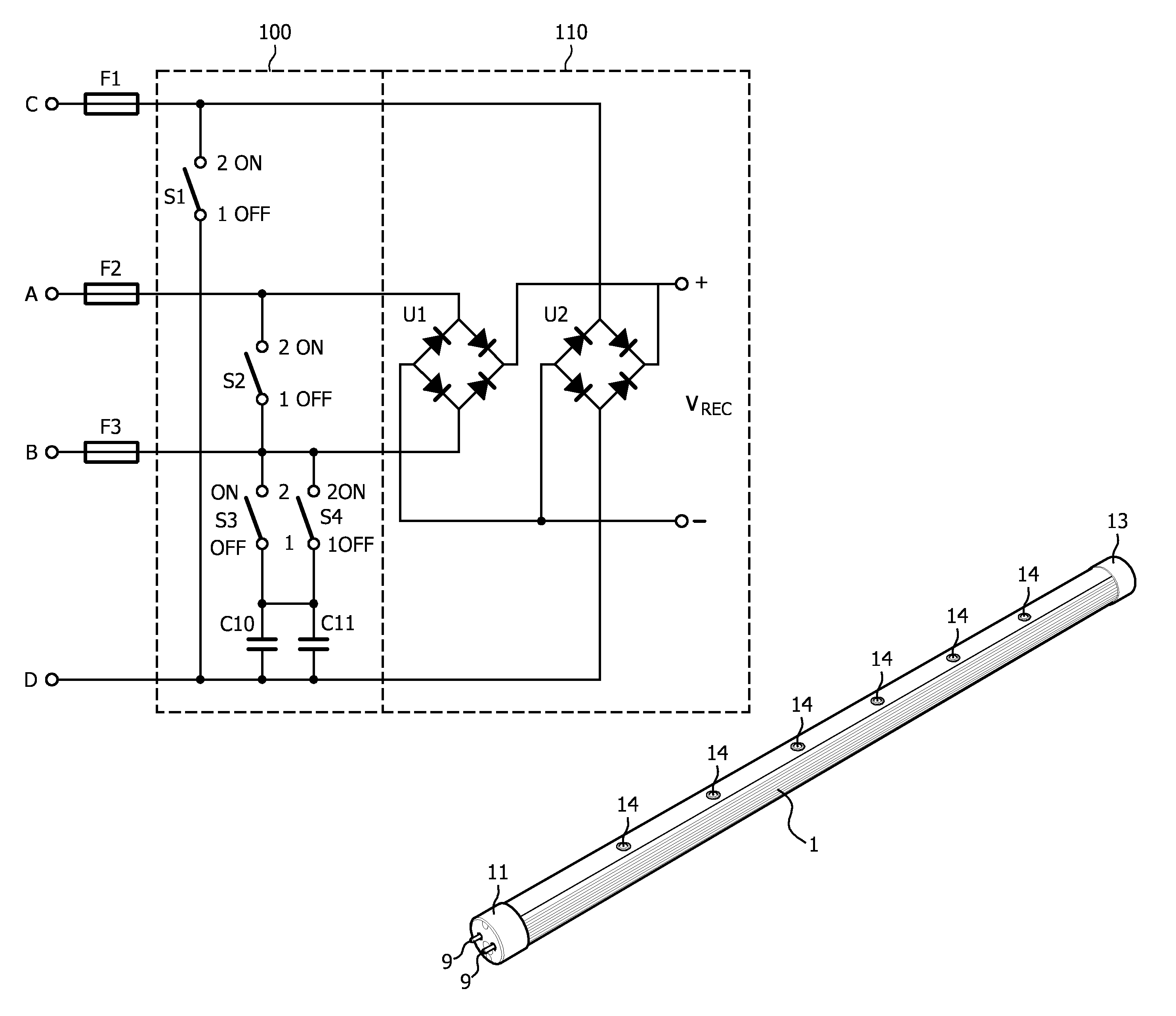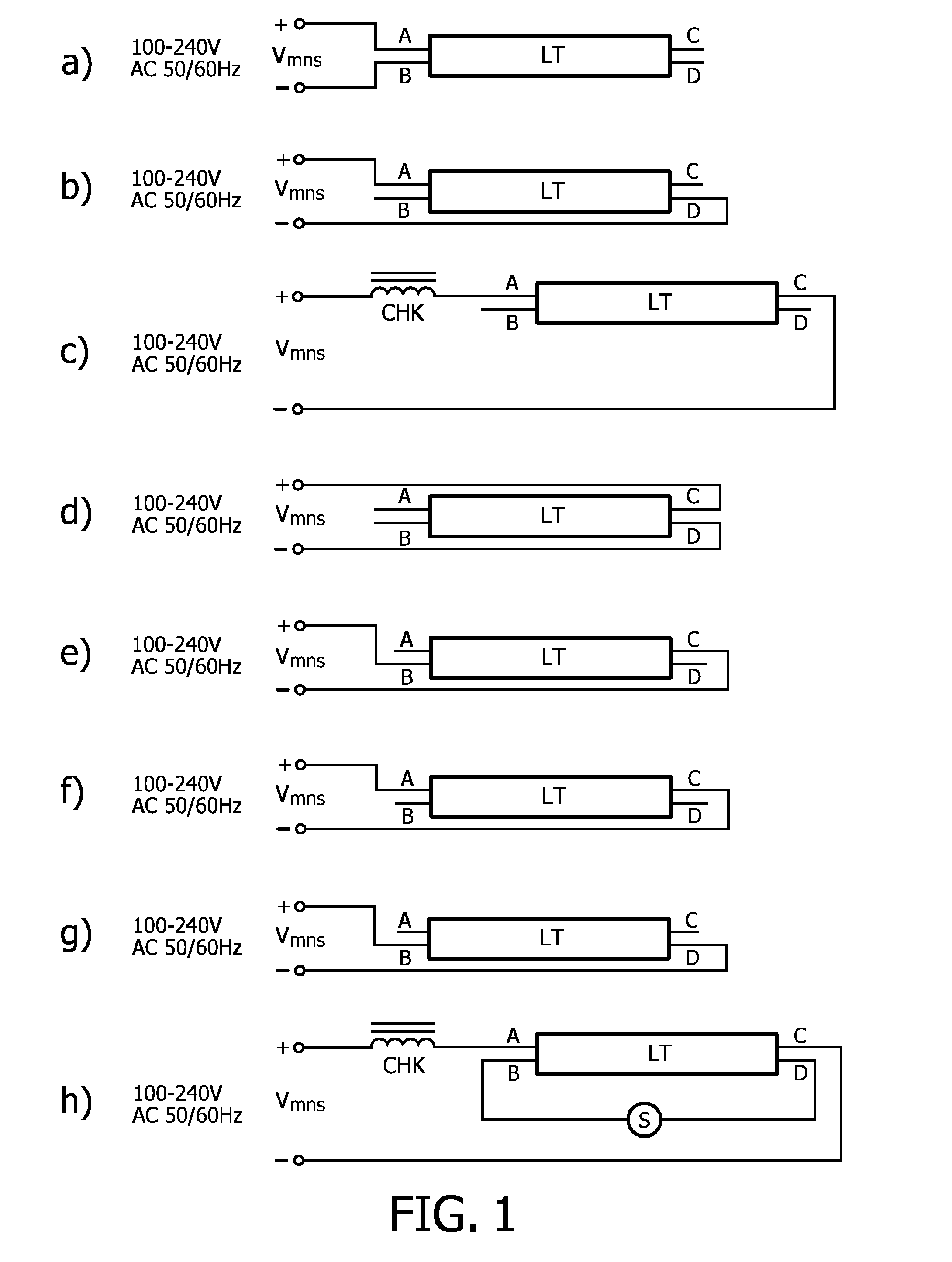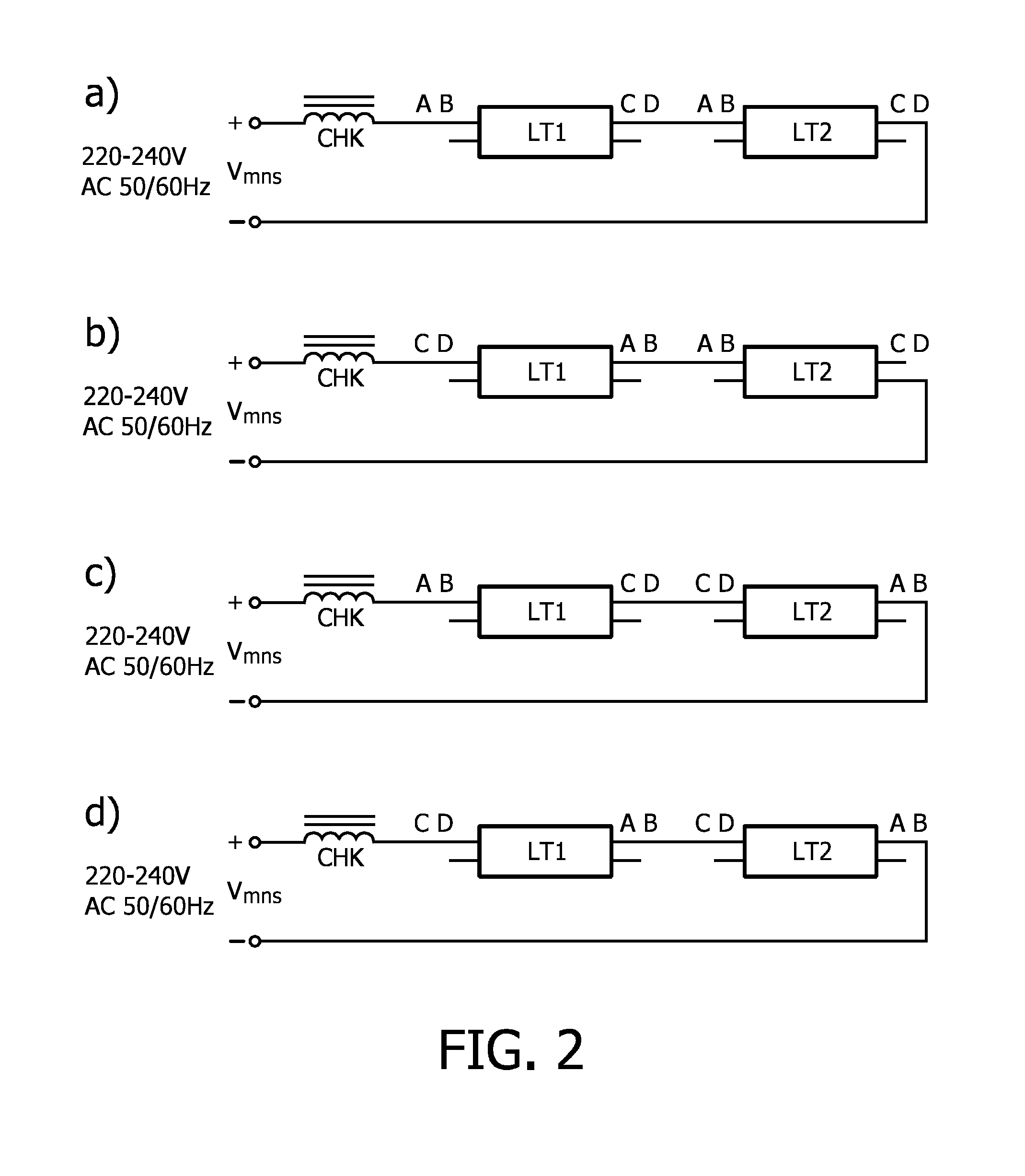LED tube system
a technology of led tubes and led tubes, which is applied in the direction of cathode-ray/electron beam tube circuit elements, lighting and heating apparatus, electrical apparatus, etc., can solve the problems of not being able to connect a fluorescent tube directly to the lighting mains, the operation life of fluorescent lamps is relatively short, and the fluorescent lamps are no longer the most energy-efficient lighting techniques
- Summary
- Abstract
- Description
- Claims
- Application Information
AI Technical Summary
Benefits of technology
Problems solved by technology
Method used
Image
Examples
first embodiment
[0167]The first embodiment on the left is an LED tube having a length of 602.9 mm and a diameter of 30.8 mm. This embodiment comprises six high power LED's equal spaced apart (for best light distribution) at a distance of 75.0 mm. A current classification of LED's which is used in the lighting market is as follows:[0168]low power LED's, driving current below 50 mA;[0169]mid power LED's, driving current between 50 mA and 150 mA;[0170]high power LED's, driving current above 350 mA (they can be driven at lower currents, but then their efficiency is generally lower).
[0171]The power consumption of the first embodiment is 10.5 Watt and the power factor lies in the range 0.83-0.92. The second embodiment from the left is an LED tube having a length of 983.3 mm and a diameter of 30.8 mm. This embodiment comprises ten high power LED's equal spaced apart (for best light distribution) at a distance of 85.0 mm. The power consumption is 17 Watt and the power factor lies in the range 0.84-0.91. Th...
second embodiment
[0173]FIG. 11 shows an equivalent circuit diagram of the LED system in accordance with the second embodiment in FIG. 9. The major difference with FIG. 10 is that this LED tube system comprises a third driver circuit 170 which drives a second series connection of LED's 210. In this embodiment the first series connection 200 comprises seven LED's and the second series connection 210 comprises three LED's. Another difference is that the coupling capacitors C10, C11 in the switching circuit 110 are both 2.2 μf, which brings the total capacitance value to 4.4 μf. This value complies with the AC power of 14.5 Watt in this embodiment.
third embodiment
[0174]FIG. 12 shows an equivalent circuit diagram of the LED system in accordance with the third embodiment in FIG. 9. The major difference with FIG. 10 is that this LED tube system comprises a fourth driver circuit 180 which drives the second series connection of LED's 210. In this embodiment the first series connection 200 comprises six LED's and the second series connection 210 comprises six LED's. Another difference is that the there are now three coupling capacitors C10, C11, C12 in the switching circuit 110 of 2.2 μf, 2.2 μf, and 0.33 μf, respectively, which brings the total capacitance value to 4.73 μf. This value complies with the AC power of 17 Watt in this embodiment.
PUM
 Login to View More
Login to View More Abstract
Description
Claims
Application Information
 Login to View More
Login to View More - R&D
- Intellectual Property
- Life Sciences
- Materials
- Tech Scout
- Unparalleled Data Quality
- Higher Quality Content
- 60% Fewer Hallucinations
Browse by: Latest US Patents, China's latest patents, Technical Efficacy Thesaurus, Application Domain, Technology Topic, Popular Technical Reports.
© 2025 PatSnap. All rights reserved.Legal|Privacy policy|Modern Slavery Act Transparency Statement|Sitemap|About US| Contact US: help@patsnap.com



